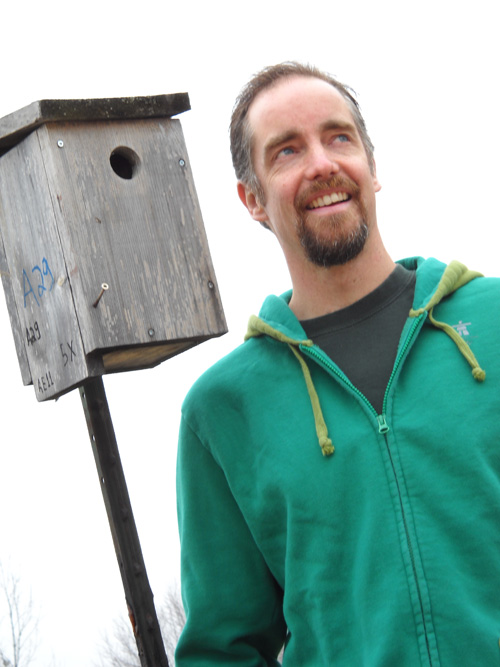
There’s a boxing match going on, and the invaders are winning. So says Chris Earley, a part-time master’s student who has found that invasive paper wasps are taking over birds’ cavity-nesting sites in Ontario, posing a further threat to an already declining species.
Cavity nesting birds in southern Ontario include the black-capped chickadee, eastern bluebird, tree swallow and house wren. These popular fliers rely on cavity nests, including boxes erected in backyards and public spaces.
Earley, who is also interpretive biologist and education co-ordinator at the Arboretum, concentrated on tree swallows, which eat insects, including mosquitoes and crop pests, on the wing. Their numbers have fallen in recent years, he says.
Now the invasive European paper wasp threatens to push Tachycineta bicolor closer to the edge. “We’re trying to figure out how bad it is.”
The insect, called Polistes dominulus, arrived in southern Ontario about a decade ago and is rapidly spreading. It builds its open-celled nest in eaves, sheds and other structures.
More and more, those structures include nesting sites favoured by birds. Typically, those birds are not deterred by the native paper wasp. But Earley’s study confirms there’s a battle shaping up between the invasive wasp — he calls them “space invaders” — and cavity-nesting birds.
Earley says it doesn’t look good for the latter.
For his study, he set out 130 boxes over 300 hectares in the Arboretum and at the neighbouring Guelph Turfgrass Institute. In 2007, he and field assistants visited the boxes weekly from May to July. He recorded numbers of wasp nests and adult wasps, their location in the box and the species of both wasps and birds.
He left wasp nests intact in some boxes (“W” boxes) and removed them from others (“X” boxes). That gave him a way to compare bird breeding success with and without wasps.
Paper wasps started a nest at least once in about one-third of the boxes. More than 80 per cent of those were European paper wasps.
One out of 14 “W” boxes contained a successful bird nest, which Earley defined as producing two eggs. In the “X” boxes without wasp nests, seven out of 13 boxes housed birds that reproduced successfully.
“There’s definitely something happening from a competition standpoint between wasps and birds.”
He says birds may be deterred from a box if wasps have already moved in. If they arrive at around the same time during May nesting season, the birds appear to enjoy a slight advantage. “If birds have a head start, they seem to be able to exclude the wasps.”
The U of G zoology graduate started his master’s degree part-time in 2007 and hopes to finish in 2011. His adviser is Prof. Gard Otis, Environmental Sciences.